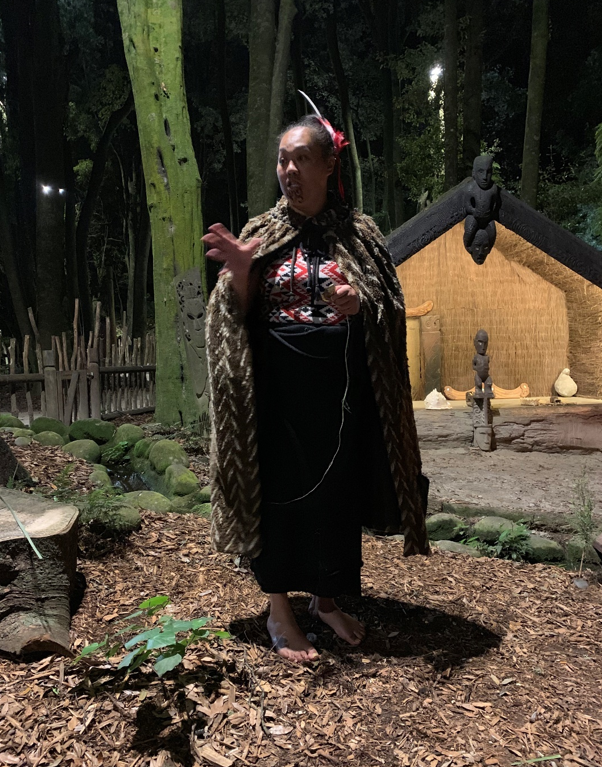Māori Cultural Night | Noche cultural maorí
English
The 2018 Census revealed that 16% of the population of New Zealand identifies as Māori, approximately 800,000 people. Place names in Te Reo Māori (the native language) are ubiquitous, and many other expressions of Māori culture, businesses, industry, and scholarship are visible throughout New Zealand. I am fortunate to know and count as my friends Māori from many different iwi (tribes). Being in New Zealand for two months to do research primarily with Māori colleagues gave me a unique perspective on the strength of the roots of Aotearoa. Most tourists who come to New Zealand learn about Māori through a cultural experience and many are found in Rotorua in the North Island. My friends and I attended a cultural night and hangi at Tamaki Village. What impressed me was the fact that Māori from a close-knit community with direct ties to the land where the traditional village was located were the curators and interpreters of the cultural offering. The experience was a feast for all the senses – the people were gracious, the information fascinating, and the food delicious.
Español
El censo del 2018 reveló que el 16% de la población de Nueva Zelanda se identifica como maorí, aproximadamente 800,000 personas. Los nombres de lugares en maorí te reo (la lengua materna) son omnipresentes, y muchas otras expresiones de la cultura, los negocios, la industria y los estudios maoríes son visibles en toda Nueva Zelanda. Soy afortunada de conocer y contar con mis amigos maoríes de diferentes iwi (tribus). Estar en Nueva Zelanda durante dos meses para investigar principalmente con colegas maoríes me dio una perspectiva única sobre la fortaleza de las raíces de Aotearoa. La mayoría de los turistas que vienen a Nueva Zelanda aprenden sobre los maoríes a través de una experiencia cultural y muchos se encuentran en Rotorua, en la Isla Norte. Mis amigos y yo asistimos a una noche cultural y hangi (festín) en el pueblo de Tamaki. Lo que me impresionó fue el hecho de que los maoríes de una comunidad muy unida con vínculos directos con la tierra donde se encontraba la aldea tradicional eran los curadores e intérpretes de la actividad cultural. La experiencia fue una fiesta para todos los sentidos: la gente fue amable, la información fascinante y la comida deliciosa.

